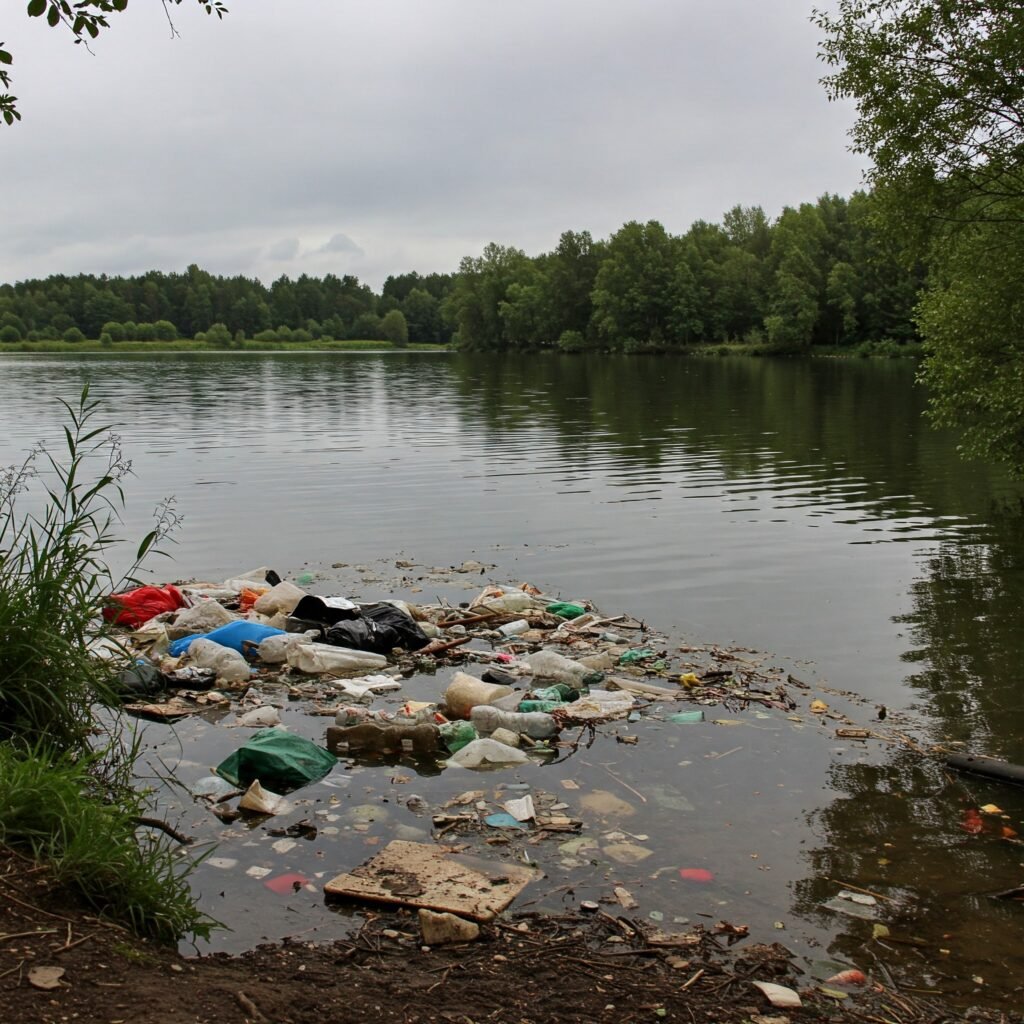Introduction to Water Safety

Engaging in aquatic activities such as sailing, paddleboarding, kayaking, and fishing can be both exhilarating and rewarding. However, it is imperative to recognize the importance of water safety to ensure a secure and enjoyable experience. Water environments, while inviting, present a unique set of risks that can pose serious dangers, particularly in cold water settings. Understanding these risks is a crucial element of participants’ preparation and awareness.
Cold water environments, in particular, can dramatically increase the likelihood of accidents and health hazards. Hypothermia, for instance, can set in quickly when individuals immerse themselves in cold waters, significantly impairing physical abilities and cognitive functions. This underscores the necessity for practical safety measures such as wearing appropriate thermal gear and life jackets, which can provide crucial support should an individual find themselves in distress.
Additionally, unfamiliarity with the water body can lead to unintended consequences. It is essential for participants to be knowledgeable about local weather conditions, currents, tides, and any potential hazards in the area, such as submerged objects or shallow waters. Boating regulations and the use of personal flotation devices are also vital components of a comprehensive water safety strategy.
Furthermore, awareness of the limitations of one’s skill level is critical. Even experienced individuals can find themselves in challenging situations. Openness to learning and practicing safety protocols, such as the buddy system, can improve overall safety outcomes. Regularly reviewing and updating one’s safety knowledge can help ensure that every aquatic adventure is not only enjoyable but also safe.
Understanding Cold Water Risks
Engaging in aquatic activities can be invigorating and enjoyable; however, it is essential to recognize the potential dangers associated with cold water conditions. Cold water poses significant risks, notably hypothermia, which can onset quickly and lead to serious consequences if left unaddressed. Hypothermia occurs when an individual’s body loses heat faster than it can produce it, typically when temperatures drop to around 70°F (21°C) or lower. This risk is especially pronounced in locations like Hollingworth Lake and similar reservoirs, where water temperatures can be deceptively low.
In addition to hypothermia, cold water can impair physical performance. Even a short exposure to cold temperatures can lead to reduced muscle function, delayed reactions, and decreased dexterity. Swimming or performing other physical activities in frigid conditions places undue stress on the body, making it challenging to maintain stamina and coordination. Consequently, individuals may tire more quickly, increasing the likelihood of accidents and mishaps.
Weather conditions also play a crucial role in cold water risks. Factors such as wind, humidity, and cloud cover can affect how individuals perceive cold water temperatures, often resulting in a disparity between anticipated comfort and actual physical response. Moreover, individual health factors contribute to susceptibility to cold water dangers. Individuals with pre-existing health conditions, the elderly, and children may experience heightened vulnerability, necessitating extra caution when engaging in any aquatic activities.

Awareness of these cold water risks is vital for anyone participating in recreational water sports or activities. By understanding the specific dangers posed by cold water, including hypothermia and reduced physical performance in environments like Hollingworth Lake, individuals can take proactive measures to ensure their safety while enjoying their aquatic experiences.
Essential Safety Gear for Aquatic Activities
Participating in aquatic activities necessitates the use of appropriate safety gear to ensure the well-being of all individuals involved. Among the most critical items is the life jacket, commonly referred to as a personal flotation device (PFD). Life jackets are essential, even for skilled swimmers, as they provide buoyancy in the event of unexpected situations in the water. Selecting a properly fitted life jacket that complies with safety standards is vital, as an ill-fitting device can fail to provide the required support.
Additionally, wetsuits and dry suits play an important role in maintaining thermal regulation during aquatic activities, particularly in colder environments. Wetsuits are designed to retain a thin layer of water between the suit and the skin, which warms when exposed to body heat. Conversely, dry suits create a barrier to external water, keeping the wearer dry and insulated. It is crucial to ensure these suits fit well to maximize comfort and effectiveness.
Other important safety gear includes dry bags, which are indispensable for keeping essential personal belongings safe and dry during outings on the water. Proper organization of equipment within dry bags also enhances safety by ensuring that necessary items are accessible. Furthermore, signaling devices, such as whistles or reflective mirrors, are integral for communication and distress signaling in emergencies. These devices can attract attention and facilitate swift rescue efforts if needed.
- 100% WATERPROOF DRYBAG GUARANTEE: Keep your equipment protected whatever the conditions! From extreme kayaking, whitewat…
- VERSATILE: Your gear will stay dry even in adverse conditions in these round bottom dry pockets. Ideal for motor boats, …
- EXTRA LONG SHOULDER STRAPS included, Detachable and adjustable lightweight waterproof dry bag at the top, easy to wear a…
It is important not to overlook the maintenance of all safety gear. Regular inspections should be conducted to check for signs of wear and tear, as well as ensuring that all equipment is functioning correctly. Proper care can extend the lifespan of safety items and ensure they are reliable when most needed. Adhering to these recommendations will significantly enhance safety and enjoyment during aquatic activities.
Planning Your Trip: The Importance of Preparation
Engaging in aquatic activities can be both exhilarating and rewarding; however, proper trip planning is crucial for ensuring safety during these adventures. Preparation begins with thorough research, which includes checking weather forecasts to anticipate changes in conditions. Understanding what the weather holds for the day can significantly impact the safety of your trip. Sudden rain, high winds, or thunderstorms can create dangerous situations, particularly on open water.
In addition to monitoring the weather, it is imperative to familiarize oneself with water currents. Different bodies of water exhibit distinct characteristics, and understanding local currents can play a pivotal role in navigation and overall safety. For instance, rivers often have strong currents that can change due to upstream rain or melting snow, while oceans may have tides and waves that affect boating or swimming conditions. Awareness of these factors will enable you to make informed decisions regarding your aquatic plans.
Another essential aspect of trip planning involves establishing an emergency plan. This should detail what to do in case of changing weather conditions or unexpected accidents, such as an injury or equipment failure. Ensure you have communication devices that are fully functional and know the closest points of rescue or safe harbor. If possible, equip yourself with a first-aid kit and familiarize yourself with basic first aid procedures relevant to aquatic environments.
- DESIGNED FOR ALL OUTDOOR ACTIVITIES: This is for basic treatment and includes all essentials for minor injuries. It is d…
- COMPACT & LIGHTWEIGHT: Made from a tough, rip-stop outer material this kit is rugged and lightweight to withstand the el…
- HIGH QUALITY CE APPROVED CONTENTS: 1 x Primary Care Leaflet, 1 x Tweezers, 1 x Scissors 5.5cm Blade, 6 x Safety Pins, 1 …
Lastly, it is always wise to share your trip plans with family or friends. Informing someone of your intended route, expected return time, and any possible changes adds an extra layer of safety. In the unfortunate event that something goes amiss, having someone aware of your plans can facilitate a timely response. By prioritizing preparation, you can enjoy your aquatic activities with greater peace of mind.
Buddy Systems and Communication
Engaging in aquatic activities can be exhilarating, yet it also presents a variety of risks. One of the most effective ways to mitigate these dangers is through the implementation of a buddy system. The buddy system involves pairing individuals together during water activities, ensuring that no one is alone in potentially hazardous situations. This system enhances safety by providing immediate assistance in the event of an emergency, promoting accountability among participants, and fostering a supportive environment. When one buddy requires help—whether due to fatigue, injury, or adverse aquatic conditions—the other is readily available to respond, effectively reducing the likelihood of accidents.
In addition to being paired with a partner, efficient communication is paramount in aquatic environments. Individuals should equip themselves with tools designed to facilitate clear communication while on the water. Whistles, for instance, serve as a straightforward and effective means of signaling for assistance, requiring minimal effort to produce a sound that carries over water. Furthermore, waterproof radios can significantly enhance communication capabilities, allowing buddies to exchange vital information about conditions or emergencies without needing to be in direct line of sight. Such devices can provide peace of mind by ensuring that help can be reached swiftly while preserving the safety of all involved.
- You will receive: The package includes 2 double-barrelled emergency whistle, who can provide you with a very loud, penet…
- Wide range of uses: This double-barrelled emergency whistle is suitable for all kinds of outdoor activities, including c…
- Convenient to Carry: Each whistle comes with a separate keychain attachment, easy to clip to your backpack, belt or keys…
It is also crucial to establish predetermined signals or codes for the buddy system before engaging in aquatic activities. This not only streamlines communication during critical moments but also minimizes confusion, enabling quick and effective responses to any situations that may arise. Combining the buddy system with robust communication tools fosters an atmosphere of safety and preparedness, allowing participants to enjoy their water adventures while remaining vigilant and equipped to handle emergencies should they occur. Ultimately, these strategies are essential for maintaining safety and enhancing the overall experience during aquatic activities.
Recognizing and Responding to Emergencies
Engaging in aquatic activities brings immense enjoyment; however, it also carries inherent risks. Recognizing potential emergencies is crucial for ensuring safety on the water. Common emergencies in aquatic environments include drowning, hypothermia, dehydration, and injuries from equipment or slips. Each of these situations requires immediate attention and appropriate response strategies.
To identify signs of drowning, observers should be aware of atypical behaviors in individuals struggling in water, such as poor coordination, inability to keep their head above water, and silence. Unlike the dramatic portrayal often seen in media, drowning can occur without a sound. In these instances, swift recognition by onlookers and immediate action can be life-saving, which includes reaching out with a flotation device or calling for professional assistance.

Hypothermia can occur when individuals are exposed to cold water for extended periods. Symptoms include shivering, confusion, and fatigue. If someone shows these signs, it is essential to remove them from the water, provide warmth, and seek medical help, as prompt response is essential in preventing long-term complications.
Dehydration is another risk, particularly on sunny days, and it can significantly impair an individual’s ability to think clearly and respond effectively in emergencies. Signs include excessive thirst, dry mouth, and fatigue. Maintaining hydration through regular water intake can avert this situation.
Basic first aid skills relevant to aquatic environments can prove invaluable in emergencies. Knowledge of CPR, wound management, and how to properly assist an individual in distress can enhance the overall safety of water activities. It is beneficial for all those partaking in aquatic sports to undergo training in first aid and emergency response to bolster their readiness for unforeseen events. Being informed and prepared can greatly improve the outcomes in critical moments.
Environment Awareness: Respecting Nature and Wildlife
Engaging in aquatic activities demands a heightened sense of environmental awareness, underscoring the importance of respecting nature and wildlife. The harmony of aquatic ecosystems is often delicate, and understanding the behavior of local wildlife can mitigate adverse interactions. For instance, observing animals from a distance enhances their comfort while ensuring your safety. Familiarizing oneself with the seasonal habits and nesting periods of native species is paramount; this helps avoid unintentional disruptions to their natural life cycles.
Human activities such as boating, fishing, and swimming can significantly impact local ecosystems. The introduction of pollutants, particularly from motorized vessels, disturbs not only water quality but also the habitats of various aquatic organisms. It is crucial for individuals to employ eco-friendly practices; for example, using biodegradable products and minimizing waste disposal in water bodies. Adopting such practices contributes to the sustainability of aquatic environments, ensuring they remain viable for future generations.
Additionally, awareness of local regulations and guidelines can foster responsible interaction with nature. Many regions have designated wildlife protection areas, where human activity is restricted to safeguard vulnerable species and their habitats. Recognizing these boundaries is essential for the preservation of biodiversity. Moreover, participating in community efforts, such as clean-up initiatives and educational programs, can enhance understanding and foster a deeper appreciation for local ecosystems.

By embracing a philosophy of stewardship towards aquatic environments, individuals can help ensure that these natural habitats retain their ecological integrity. Respecting nature not only enhances the quality of outdoor experiences but also reinforces the collective responsibility of preserving these vital ecosystems for the well-being of wildlife and humanity alike.
Tips for Different Aquatic Activities
Engaging in aquatic activities requires both enjoyment and safety-conscious practices. Each water activity presents unique challenges, hence tailored safety tips are essential. Regardless of the activity—whether sailing, paddleboarding, kayaking, or fishing—there are core safety principles that everyone should adhere to while also considering specific recommendations for each endeavor.
For sailing, it is crucial to familiarize yourself with navigation rules and weather patterns. Ensure that all safety equipment, such as life jackets and flares, are onboard and meet regional regulations. Before setting sail, perform a thorough inspection of the vessel, including checking the sail and rudder. Additionally, maintaining clear communication procedures is vital, especially in case of emergencies.
Paddleboarding requires a different set of considerations. Always wear a personal flotation device (PFD), especially for beginners or in unfamiliar waters. Be aware of your surroundings and avoid congested areas, and ensure your paddleboard is appropriate for the water conditions you will be facing. Sun protection, including sunscreen and appropriate clothing, is essential, as this activity often exposes participants to prolonged sunlight.
- SUPERIOR ENDURANCE VS. SWEAT & WATER — From family fun to hardcore competition, Banana Boat Sport Sunscreen provides str…
- CLINICALLY PROVEN UVA/UVB PROTECTION — This SPF 50+ broad spectrum sunscreen spray protects skin from the sun’s harmful …
- LIGHTWEIGHT, BREATHABLE FORMULA — Non-greasy feel won’t weigh you down
For kayaking, using a proper fitting kayak and paddle is paramount. Assess water conditions and select routes that match your skill level. Make sure to wear a PFD and stay aware of weather changes. It’s advisable to kayak with a partner where possible, as mishaps can occur unexpectedly. Carrying essential gear, such as a whistle or a signaling mirror, can greatly increase your safety.
Lastly, when fishing, choose spots that are safe and sanctioned for the activity. Always check local regulations and wear appropriate attire. Ensure your equipment is reliable, and consider bringing along a first aid kit. Maintaining a respectful distance from others will help avoid mishaps, enhancing an enjoyable fishing experience.
By following these tailored safety tips, individuals can enjoy a variety of aquatic activities while minimizing risks. Familiarity with established safety practices creates a foundation upon which fun and adventure can be safely built.
Conclusion: Making Water Safety a Priority
Water activities offer a plethora of enjoyment and relaxation, but they also come with inherent risks. This blog post has highlighted several crucial tips focused on ensuring safety during aquatic adventures. From understanding the local water conditions to wearing appropriate safety gear, these precautions are vital for minimizing risks while engaging in activities such as boating, swimming, or fishing.
One of the primary points discussed is the importance of being aware of weather patterns and water conditions before heading out. These elements can significantly affect your experience, and being prepared will allow you to respond to sudden changes effectively. Additionally, we emphasized the necessity of wearing life jackets and ensuring that they fit properly, as they can be lifesaving devices in emergencies.
Moreover, it is crucial to educate yourself about the particular water environment you will be navigating. Knowledge about currents, tides, and local wildlife can prevent accidents and enhance your awareness during your aquatic pursuits. We also touched on the significance of maintaining physical fitness, as being in good shape can directly impact your ability to swim or handle unforeseen circumstances.
Lastly, we encourage readers to approach aquatic activities with a sense of responsibility. Whether engaging solo or in groups, creating a safety-conscious atmosphere can lead to enjoyable experiences. By adopting these water safety practices and remaining vigilant, you are not only protecting yourself but also promoting a culture of safety among fellow water enthusiasts. With consistent awareness and preparedness, we can fully enjoy the beauty and exhilaration of aquatic adventures while prioritizing safe practices.











